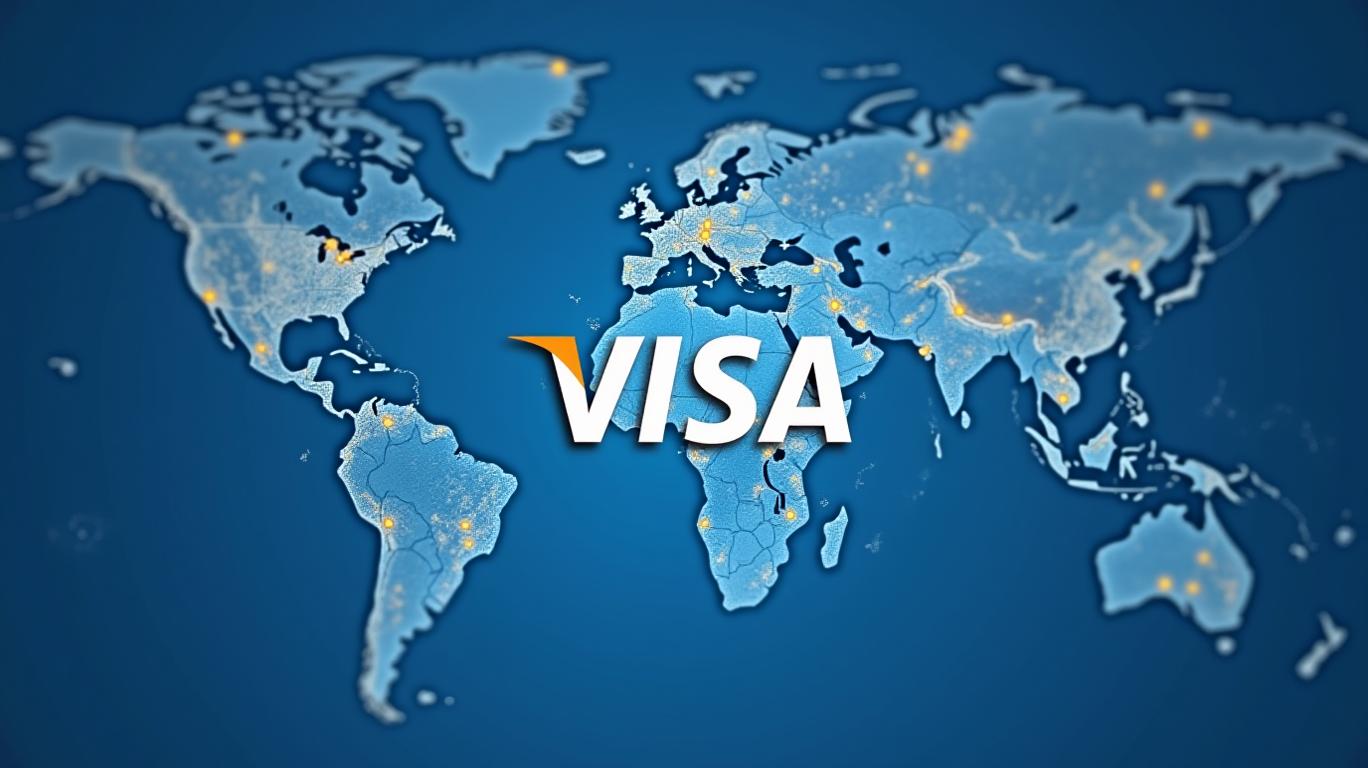Visa's Resilient Growth Signals a Global Consumer Spending Surge
Visa’s latest earnings report has delivered a resounding message to investors: global consumer spending remains robust, even as economic headwinds persist. In Q1 2025, the payments giant reported $9.5 billion in net revenue, a 10% year-over-year increase (11% in constant dollars), with earnings per share (EPS) surging 14%. The results underscore a critical truth about today’s economy: while uncertainty looms, the shift toward digital payments and cross-border commerce is fueling Visa’s momentum.

The Numbers Tell a Story
Visa’s performance is not merely a snapshot of current spending—it’s a reflection of structural shifts. Global payments volume grew 9% in constant dollars, with cross-border volume (excluding intra-Europe) surging 16%, driven by travel recovery and e-commerce. In the U.S., 7% growth in payments volume was bolstered by a strong holiday shopping season, with discretionary categories like retail and travel outperforming. Meanwhile, international markets—particularly Latin America (22% growth) and CEMEA (18%)—are emerging as growth engines, as cash transitions to digital.
The data paints a clear picture: consumers are spending, but not uniformly. Discretionary sectors and travel are thriving, while Asia Pacific’s modest 1% growth hints at lingering macroeconomic challenges. Yet Visa’s leadership sees opportunity in these trends. “We’re capitalizing on a global shift from cash to digital payments,” CEO Ryan McInerney noted, citing a 60% increase in digital adoption since 2020, with Visa processing $4 trillion in quarterly volume.
Driving the Growth: Innovation and Partnerships
Visa’s success hinges on two pillars: digital innovation and strategic partnerships. Tap-to-pay adoption is soaring globally: in Japan, penetration jumped 20 percentage points to 44%, while in Argentina, it hit 78%. The U.S. reached 57% penetration, with new features like “tap-to-add” enabling seamless wallet integration. Meanwhile, tap-to-phone transactions tripled year-over-year, now active in 118 markets.
Partnerships are unlocking new markets. In India, Visa inked deals with ICICI Bank, SBI Card, and Kotak Mahindra to boost affluent and cross-border spending. In China, a renewed partnership with ICBC—the world’s largest bank—signals progress in a critical region. Visa Direct, its real-time payment platform, processed $10 billion in transactions over 12 months, a 34% jump, with fintech collaborations like X Money and OnePay driving adoption.
Equally important is Visa’s expansion into value-added services, which grew 18% in Q1. Tools like CyberSource (merchant solutions) and Visa Protect (fraud prevention) are now critical revenue streams, reflecting Visa’s shift from a transaction processor to a financial services powerhouse.
Looking Ahead: Why Investors Should Take Note
Visa’s Q2 guidance reinforces optimism. U.S. payments volume is expected to grow 8%, while cross-border volume could rise 17%, further fueled by travel and e-commerce. Full-year revenue growth is now projected to hit low double digits, with EPS growth revised upward to low teens due to a lower tax rate.
Yet challenges remain. The acquisition of fraud-prevention firm Featurespace and lingering portfolio impacts (e.g., lapping prior-year Pismo effects) will pressure EPS slightly. Still, McInerney and CFO Chris Suh are confident: strategic investments in innovation and client partnerships will sustain growth.
Conclusion: Visa’s Resilience and the Road Ahead
Visa’s Q1 results are a testament to its dominance in the digital payments ecosystem. With 60% of global transactions now digital and cross-border commerce booming, the company is positioned to capitalize on two unstoppable trends: the death of cash and the rise of a borderless economy.
The numbers are compelling: 11% growth in processed transactions, 18% expansion in value-added services, and a 17.5–18% tax rate for 2025 all point to a path to sustained profitability. For investors, Visa’s blend of defensive cash flow and growth catalysts—digital adoption, partnerships, and B2B expansion—makes it a rare stock capable of thriving in both calm and volatile markets.
As the world moves toward a cashless future, Visa’s leadership is not just an advantage—it’s a mandate. The question for investors isn’t whether to bet on consumer spending; it’s how to do so with the most durable player in the game. Visa’s Q1 results suggest the answer is clear.


_442a2dcc1749832873286.jpeg)
_e68fac6d1749831664430.jpeg)






